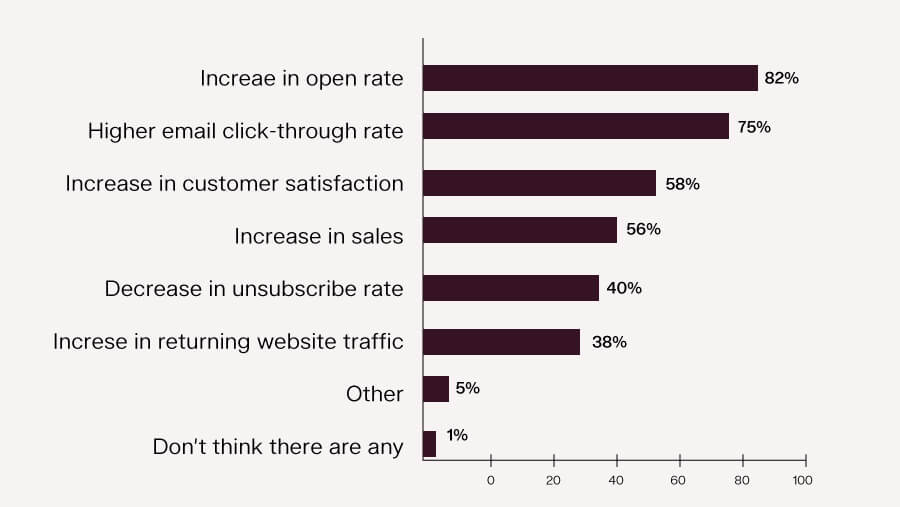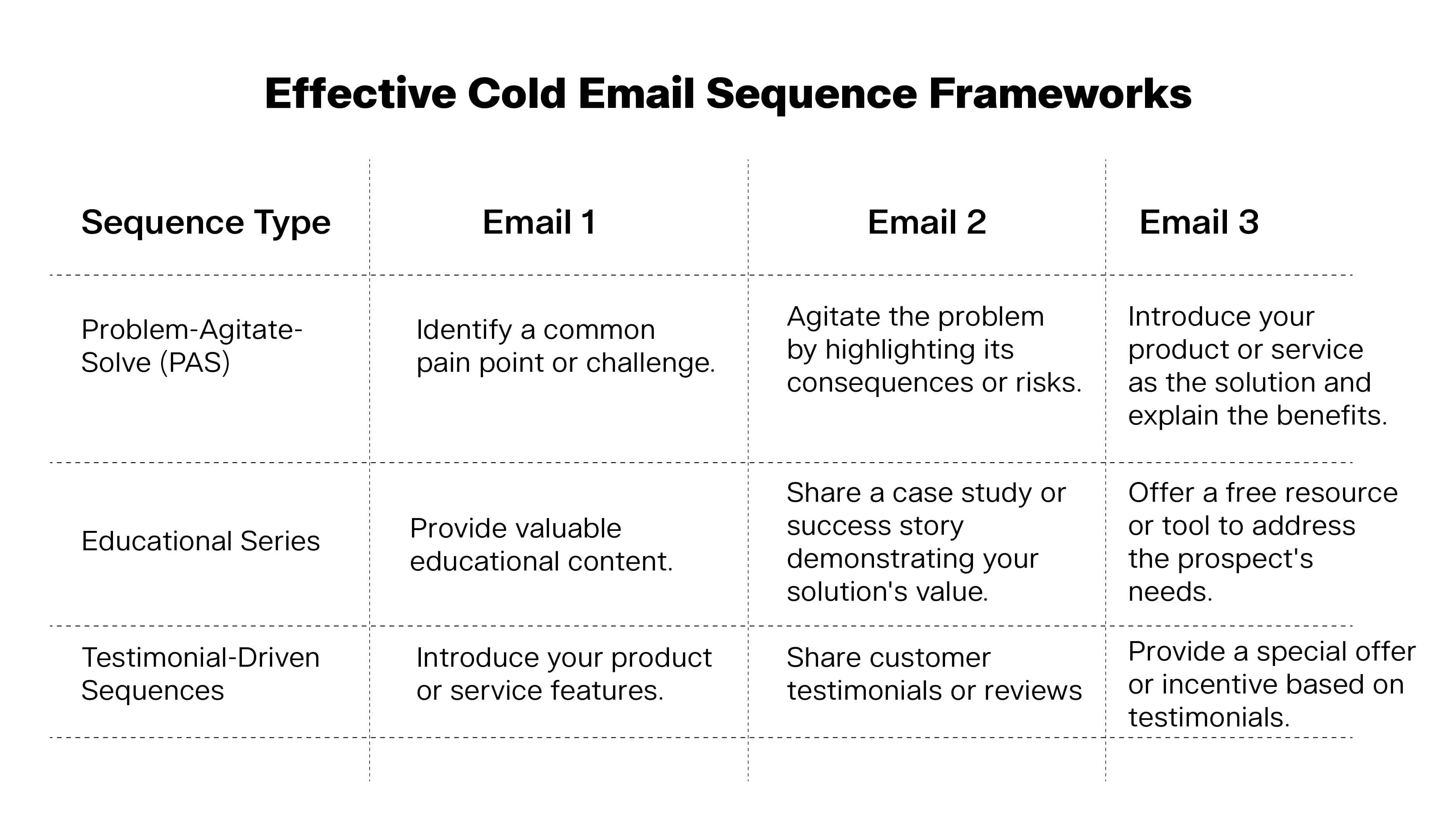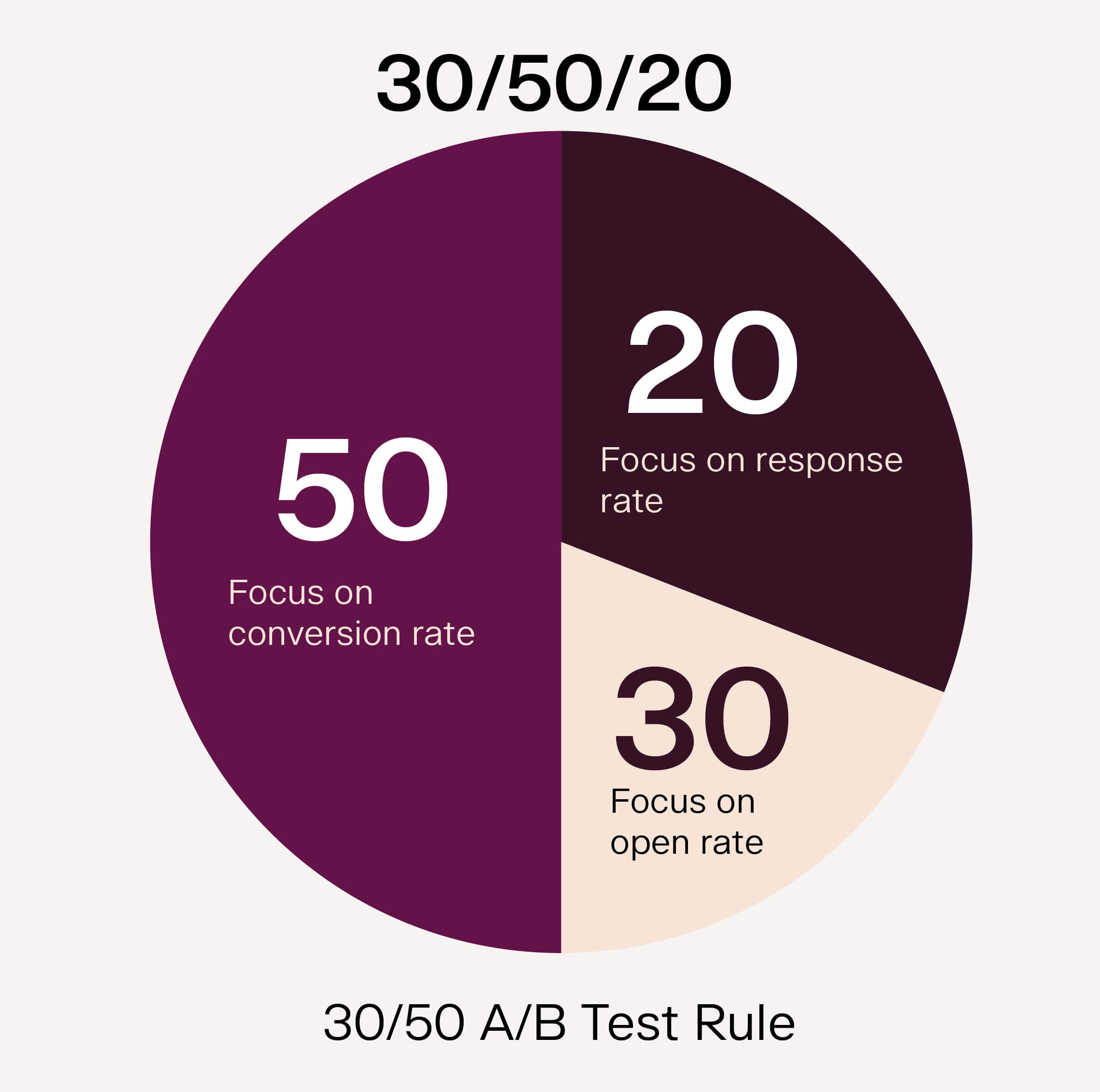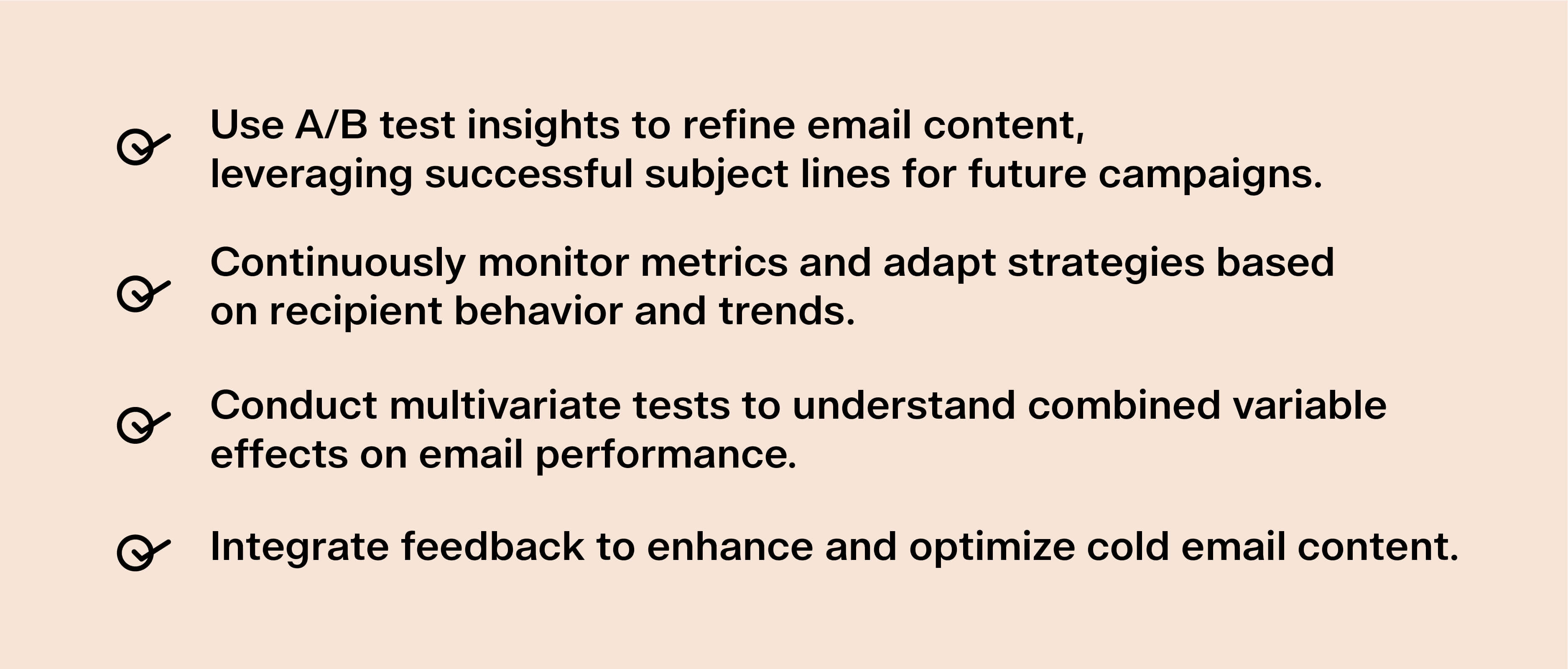
Irresistible Prospecting Messages: Write Emails That GET A RESPONSE!
Have you ever found yourself staring at a blank screen, fingertips hovering over the keyboard, trying to conjure up the perfect email? If yes, then this guide is for you.
You may want to master crafting irresistible prospecting messages to grab the attention of your prospective. But, in today's digital age, where inboxes overflow, and attention spans dwindle, doing so becomes difficult.
However, strategic tweaks in your prospecting messages can do wonders, such as:
- Personalized elements in emails improve click-through rates by 14%
- Segmented and targeted emails generate 58% of all revenue
These are only a few examples of how you can craft compelling emails. There's a lot to learn. So, allow us to dive deep into the strategies and tactics you need to write emails that compel your prospects to take action.
Step-by-Step Guide for Writing Effective Prospecting Messages that Get Response
Your cold email campaign can thrive with the right way of writing brand messages for target prospects. So, below is a comprehensive guide on how you can do so:
1. Pinpoint Your Target Market
It's simple: know your target audience before writing your cold email. You can do it by:
- Analyzing your existing high-ticket clients' preferences, buying behavior, and needs.
- Defining your target audience's demographic, firmographic, and psychographic criteria based on the analysis.
- Creating your ideal customer profile (ICP) or buyer persona whose needs your product can fulfill.
2. Segment Your Email List
This step is considered essential by 51% of marketers due to various benefits:

It allows you to write more personalized messaging. Divide your email list into smaller segments once you gather prospects' basic contact information per your ICPs or buyer personas. You can segment this list based on demographics, industry, job title, or other relevant criteria.
3. Create Email Templates for Each ICP
The needs and product information required by each of your ICPs will differ. Thus, your email template will vary too. Here's a sample of what adjustments you may need to make while writing the emails:
1) ICP 1:Chief Technology Officer (CTO)
Needs:
- Need for innovative technology solutions
- Desire to streamline operations and increase efficiency
- Concerns about cybersecurity and data protection
Language:
- Technical terminology and jargon
- Focus on innovation and cutting-edge solutions
- Metrics and data-driven insights
Sample Email Copy:
Subject: Enhancing Efficiency with [Your Company Name] Solutions
Dear [CTO's Name],
I hope this email finds you well. We’re reaching out to introduce [Your Company Name] and our innovative technology solutions designed to streamline operations and drive efficiency for businesses like yours.
Our [Product/Service Name] offers advanced features such as:
- [Feature 1]
- [Feature 2]
- [Feature 3]
We understand the challenges of today's digital landscape and are committed to providing tailored solutions that align with your strategic objectives.
Let's schedule a brief call to discuss how [Your Company Name] can support your technology initiatives.
Best regards,
[Your Name]
[Your Position]
[Your Contact Information]
2) ICP 2
Department Head
Needs:
- Need for a cost-effective solution
- Focus on team productivity and collaboration
- Concerns about scalability and ease of implementation
Language:
- Business-friendly language
- Emphasis on ROI and cost-saving
- Collaboration and team-centric messaging
Sample Email Copy:
Subject: Boost Team Productivity with [Your Company Name]
Dear [Department Head's Name],
We’re reaching out from [Your Company Name] with a solution to enhance your department's productivity and streamline collaboration.
Our [Product/Service Name] offers:
- [Feature 1]
- [Feature 2]
- [Feature 3]
We've helped departments like yours achieve measurable improvements, as seen in [Case Study/Testimonial]. Let's discuss how we can support your goals.
Best,
[Your Name]
[Your Position]
[Your Contact Information]
You can use cold email template builders like Mailchimp or HubSpot. These offer intuitive email builders with drag-and-drop functionality.
4. Add the Right Psychological Triggers
Pick the words and phrases that tap into your customers' emotions and persuade them to take action. Add them to the main elements of your cold email copy, such as:
-
Subject Lines
The first thing your prospects see when you drop your cold email in their inboxes is the subject line. In fact, just the subject line can entice 47% of email recipients to open the email.
So, ensure you optimize the subject lines with the following elements:
- Personalization:
- Use the recipient's name: "John, don't miss out on this exclusive offer!"
- Reference past interactions: "Remember when you loved our last meeting? Here's something even better!"
- Curiosity: Make your prospects want more:
-
- Pose a question: "Want to know our secret to success?"
-
- Use cliffhangers: "You won't believe what happened next..."
-
- Tease valuable content: "Unlock the key to..."
- Hint at exclusive information: "Be the first to know..."
- Urgency/Scarcity:
-
- Limited availability: "Only a few spots left..."
-
- Countdowns: "Don't wait! The sale ends tonight!"
- Benefit-driven:
- Highlight benefits: "Discover how to boost your productivity!"
-
- Solve a problem: "Struggling with [problem]? We have the solution."
- Offer value: "Get [X] for free!"
- Action-oriented:
- Use strong verbs: "Grab your chance now!"
- Emotional Appeal:
- Appeal to emotions: "Experience the joy of..."
- Create a sense of belonging: "Join our community of [X]!"
-
Credible Email Content
The next most crucial element of an effective cold email is its content. So, instead of immediately pitching your product or service, offer something of value to the recipient. To prove your claim, provide appropriate information to build trust:
- Mutual Connections: It establishes a sense of familiarity and trust, as the recipient may be more inclined to engage with someone recommended by a trusted contact.
- Social Proof: Incorporate social proof elements such as customer logos, recognizable brand affiliations, or statistics about your company's success. Demonstrating that others have benefited from your products or services can help build credibility.
- Testimonials and Success Stories: Include relevant reviews or case studies from satisfied customers or clients. It provides tangible evidence of your value and builds trust by showcasing real-life experiences.
- Free Trial or Demo: Provide a risk-free way for recipients to experience your product or service. It can help alleviate skepticism and solidify confidence in what you're offering.
-
Call to Action (CTA)
You need to think beyond using powerful words in CTA. To make your prospects respond to your email, include factors that influence a recipient's behavior, such as:
- Reciprocity: Start with a gesture of goodwill, like providing helpful information or a free sample. This way, you increase the likelihood that they'll feel obliged to reciprocate. Thus, you can make them more likely to comply with your CTA request.
- Bribery: Ethically provide benefits like discounts or rewards to motivate prospects to act in a way that benefits you.
- Foot-in-the-Door Technique: Get your prospects to agree to a small request before asking for something more significant. Once they've committed to the initial request, they're more likely to comply with subsequent requests.
Best Practices to Write Response-worthy Cold Email Copies
To make your cold email prospecting messages even more effective, follow these best practices:
1. Plan Your Email Sequence
You must nurture and build relationships with potential customers who haven't responded to your initial email. Designing an effective multi-stage email sequence can help you do it effectively.
It involves sending follow-up emails over time to nurture leads and gradually guide them through the sales funnel. These sequences help maintain engagement, provide additional value, and build trust with prospects.
Examples of Effective Cold Email Sequence Frameworks:

2. Figure Out Right Timing and Frequency
So, what’s the ideal time to send your cold emails? Studies show that sending them between 8:00 and 11:00 a.m. in the receiver's time zone is best. People usually start work early and have time to check their emails before they get busy.
Further, space out your follow-up emails based on your audience's preferences and behavior. Generally, wait 2-3 days after the initial contact before sending the first follow-up email. Subsequent emails can be sent every 3-5 days.
Be persistent in your follow-ups, but always maintain a polite and respectful tone. Avoid sounding pushy or aggressive, as this can turn prospects away. Instead, focus on adding value and addressing their needs with each email.
3. Provide Additional Value
Each follow-up email should offer something new or highlight different aspects of your product or service to keep the conversation engaging. However, avoid adding new information when prospects reach the final stage of their buying journey.
So, here are examples of information you can include:
- Additional information or resources related to the prospect's interests.
- Case studies or success stories relevant to their industry or pain points.
- Special offers, discounts, or incentives to encourage action.
4. Use Tools to Accelerate Process
Consider some of the best tools to streamline your prospecting via cold email, such as:
- All-around cold email software: QuickMail, Klenty, and Salesmate.
- Chrome extension: RightInbox
- Simple follow-ups: FollowUp.cc
- Cold email deliverability: Mailflow
5. Run Timely A/B Testing and Optimization
It is one of the most essential best practices for creating effective prospecting messages. Utilize the 30/30/50 rule to measure the effectiveness of your outreach campaign. Strive for a:

- 30% focus on open rate
- 30% focus on response rate
- 50% focus on conversion rate
With the A/B test, you can achieve this quantified value by learning what drives results and what needs improvement in your cold email.
Here’s what to test:
-
Cold Email Testament Elements:
-
- Subject Lines: Test different subject lines to see which ones generate higher open rates. Tools like CoSchedule's Headline Analyzer or SendCheckIt help optimize subject lines for higher open rates by analyzing their effectiveness.
- Body Content: Experiment with variations in the email body, such as different messaging, length, and formatting.
- CTA: Test different CTAs to determine which leads to higher click-through rates.
- Personalization: Test the effectiveness of personalized vs. generic content in engaging recipients.
- Timing: Experiment with sending emails at different times and days to identify optimal send times.
It's important to test hypotheses related to these elements and track the results for data-driven decision-making.
-
Sample Size:
Calculate the sample size needed for statistically significant results based on confidence level, margin of error, and population size.
-
Statistical Significance:
To draw valid conclusions, ensure that the observed differences between variants are statistically significant.
-
Tools and Platforms:
Utilize cold email marketing platforms like OutReach, which offer built-in A/B testing features. Alternatively, specialized A/B testing tools like Optimizely can be used.

Conclusion
Remember that a conversion-focused, data-driven approach is your strongest ally in your quest to excel in cold email prospecting. Crafting targeted messages and leveraging insightful analytics can significantly boost engagement and response rates.
If you're ready to take your prospecting to the next level, look no further than a reliable outbound lead gen company.
Our specialized data-driven sales solutions are tailored to your needs. Contact us today, and let us help elevate your prospecting success with our proven strategies.




